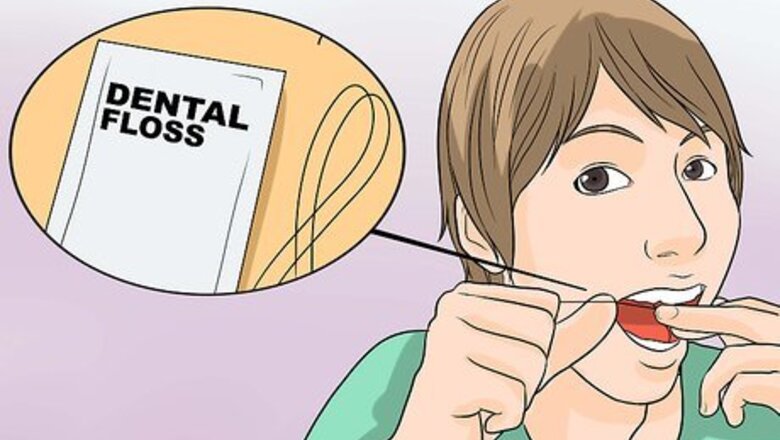
views
Using Floss and Other Objects
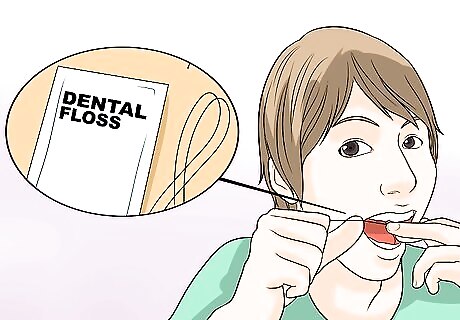
Use dental floss. The American Dental Association recommends using dental floss at least once every day, but especially when you know there is debris stuck between your teeth. This may also include soft debris, which can include bread. The starch will turn into sugar and bacteria will grow. Try to work the floss as close to the gum as possible between the teeth where the popcorn is stuck. Form the floss into a c-shape around one tooth, then around the next tooth. Work the floss back and forth or up and down, but be sure to also press down and massage your gums to ensure you're flossing thoroughly. Rinse your mouth out with water.
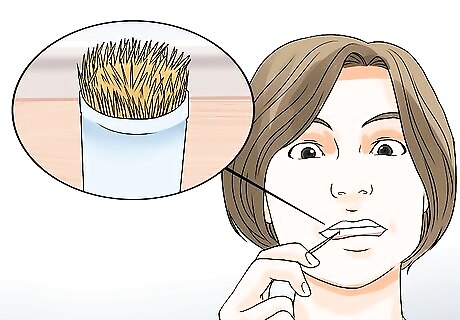
Use a toothpick. Take great care to avoid stabbing or otherwise injuring your gums. Insert the flat end of a toothpick between your teeth at the site where the popcorn is lodged. Gently work the popcorn out from between your teeth, moving it either upward or forward. If this doesn't work or if the toothpick doesn't have a flat end, use a pointed end and gently work the toothpick along your gums. Use extreme caution to avoid injuring your gums or the poking the inside of your mouth. If your teeth are too crooked, then you may need to look for a strong fabric wire that can act like a floss.
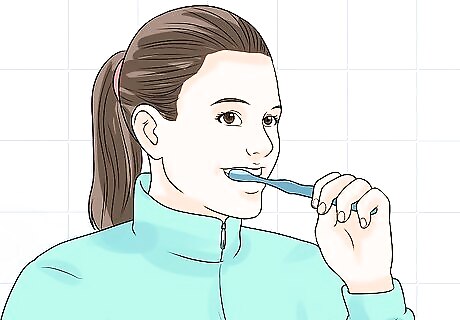
Brush your teeth. Brushing is highly effective at removing dental debris like popcorn. Wet the bristles of your toothbrush, then add fluoride toothpaste, and brush thoroughly, being sure to get all of your teeth. When you brush your teeth, use a gentle circular motion, and brush for at least 2 minutes. If you scrub your teeth too hard, you could wear away the enamel. Toothpaste is optional for removing debris, but the foaming action may help. Squeeze out a pea-sized blob of toothpaste onto the bristles of your toothbrush. Hold the toothbrush at a 45 degree angle to your gum. Try to work the popcorn out from between your teeth using the bristles in various strokes and movements. Once you remove the popcorn, rinse the bristles of your toothbrush to avoid reintroducing the debris into your mouth.
Removing Popcorn Without Floss

Move your tongue over the affected teeth. Try to gently "pick" at the popcorn using your tongue. Do not overdo this, as it may cause pain and inflammation to your tongue.
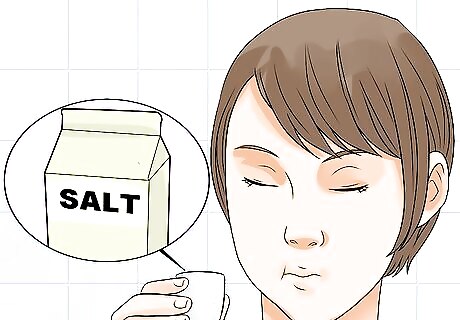
Rinse your mouth. You can use plain water, but using a salt water rinse will help ease any inflammation you're experiencing and reduce the chances of an infection. The gritty texture of salt may provide additional assistance in removing food debris. Mix one tablespoon of salt into an eight ounce glass of warm water. Stir until the salt is well-dissolved. Swish the salt water on the affected side of your mouth. Try to focus your rinsing around the location of the popcorn. You can also use an oral irrigator or WaterPik if you have one.
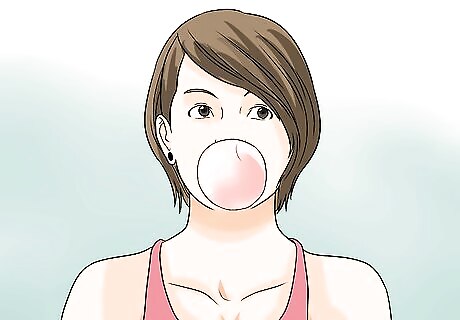
Try chewing gum. Chewing gum increases salivation in the mouth, and can also help physically dislodge debris from your teeth. Sugar-free chewing gum has even been shown to reduce dental debris by up to 50%. Focus your chewing on the affected side of your mouth for optimal results.
Treating the Pain Associated with Dental Debris

Take a pain reliever. If the dental debris remains lodged between your teeth long enough for an abscess or infection to form, it can be quite painful. An over-the-counter pain reliever like ibuprofen or acetaminophen can help reduce inflammation and relieve the pain until you can see a dentist. Maintain good oral hygiene but avoid any excess trauma by trying to pull out the debris
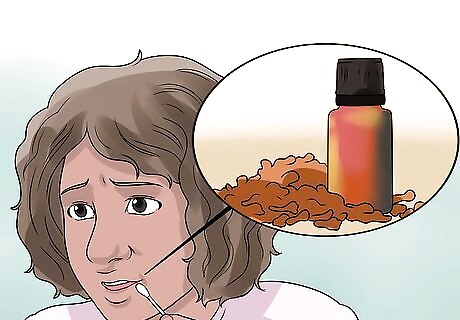
Use clove oil. Clove oil has been shown to have pain-relieving and antibacterial properties. Clove oil may help relieve dental pain until you can visit a dentist. Dab some clove oil onto a cotton ball or the tip of a cotton swab. Apply the clove oil cotton to the site of the pain. Repeat as needed until you can see your dentist.
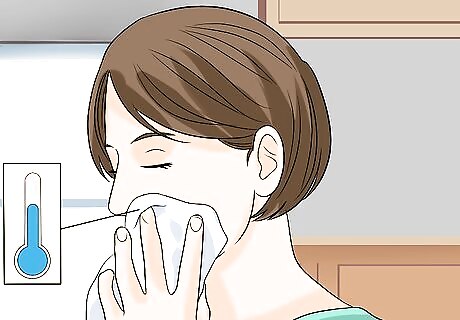
Use a cold compress. Applying a cold compress to the outside of your mouth may help reduce inflammation and relieve pain. Wrap an ice pack in a towel. If you don't have an ice pack, wrap several ice cubes in a towel, or soak a towel in cold water. Hold the towel over the affected side of your face. Use the cold compress for no more than 20 minutes at a time. Then leave it off for at least 10 minutes before reapplying. You can do this 3 to 4 times a day.

Call your dentist to schedule an appointment. Your dentist will be able to remove the irritating popcorn debris, and may perform a routine cleaning to ensure that there are no other problem areas in your mouth. If an abscess or infection has formed, your dentist will also be able to treat the problem, and may recommend a prescribed medication to help manage the pain. If you're having any kind of dental pain, it's important to see your dentist as soon as possible to rule out any underlying problems.


















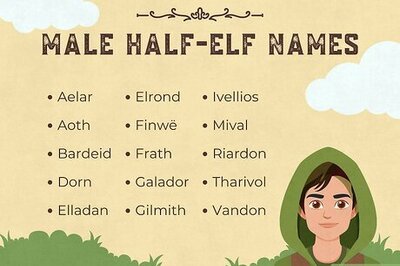
Comments
0 comment